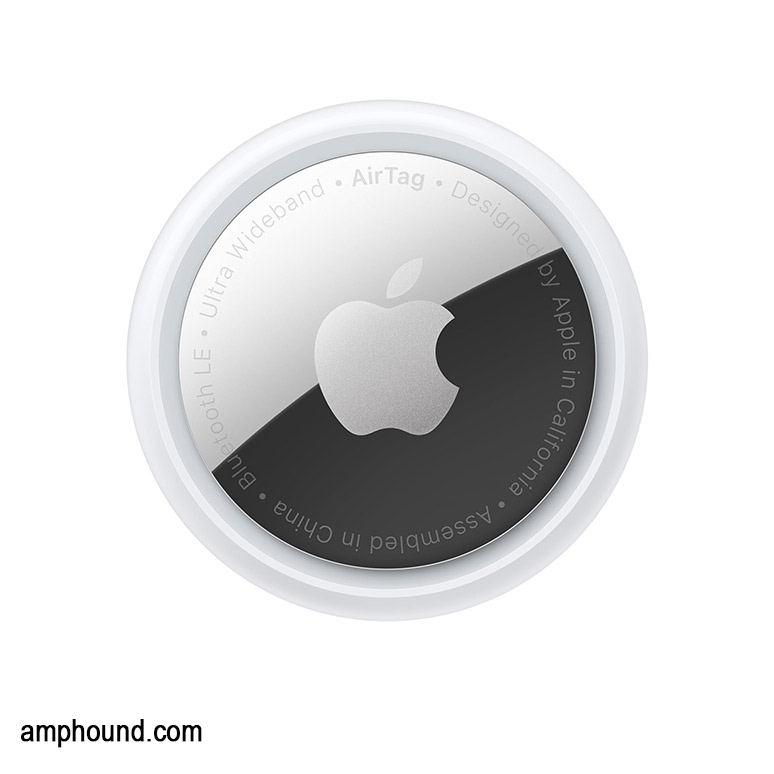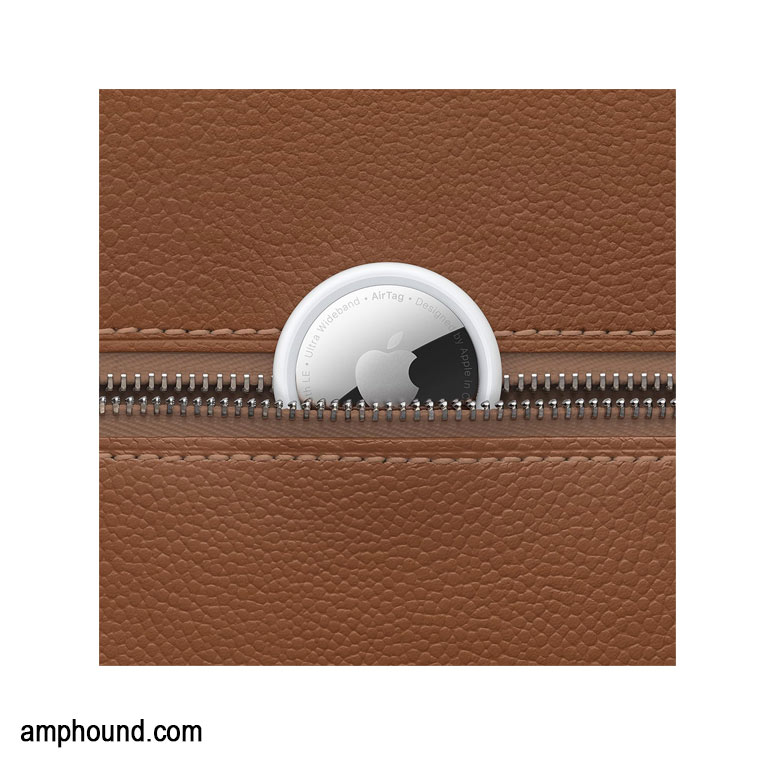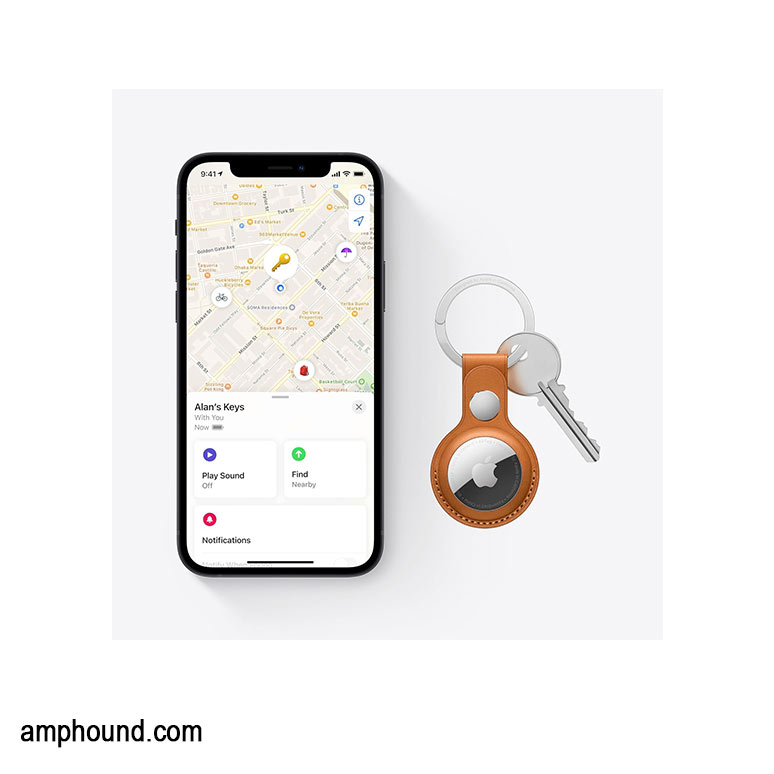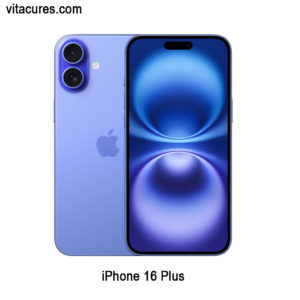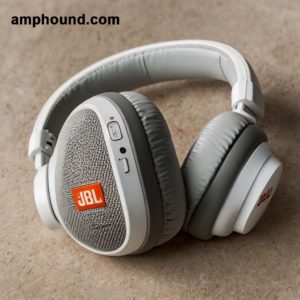The Apple AirTag is a small and sleek device designed to help users keep track of their personal belongings, like keys, wallets, and bags, using Apple’s Find My network. The AirTag, which Apple introduced in 2021, is simple to attach to any item and can have its location tracked using the Find My app on iPhone, iPad, and Mac devices. Featuring Bluetooth and Ultra-Wideband technology, it offers precise locating capabilities, especially with newer iPhone models that support Precision Finding. The device is user-friendly, with a replaceable battery that lasts over a year, making it a convenient and reliable solution for preventing lost items.
Apple AirTag: A Comprehensive Overview
Introduction
In an era where personal items are indispensable yet frequently misplaced, the need for efficient tracking solutions has surged. Apple Inc., renowned for its innovation and seamless ecosystem integration, addressed this need with the introduction of the Apple AirTag in April 2021. Designed to help users locate and keep track of their personal belongings, the AirTag leverages advanced technologies and the extensive Find My network to offer a reliable and user-friendly tracking solution. This comprehensive overview delves into the various facets of the Apple AirTag, including its design, technology, battery life, pricing, offers, user experiences, and its position in the competitive landscape.
Product Details
Design and Build Quality
The Apple AirTag is a small, sleek device, embodying Apple’s signature minimalist aesthetic. Its design is both functional and elegant, making it a discreet yet effective tracking tool.
- Dimensions and Weight: The AirTag measures approximately 1.26 inches (31.9 mm) in diameter and 0.31 inches (8.0 mm) in height, making it compact enough to attach to various items without adding noticeable bulk. It weighs about 11 grams (0.39 ounces), ensuring it doesn’t weigh down the items it’s attached to.
- Materials: The AirTag features a polished stainless steel frame, giving it a premium look and feel. The front is made of white plastic with the Apple logo, while the back houses the battery compartment.
- Color and Finish: The device is primarily white, aligning with Apple’s clean design language. The stainless steel edges add a contrasting finish, enhancing its visual appeal.
- Durability: Rated IP67 for water and dust resistance, the AirTag can withstand immersion in water up to 1 meter for approximately 30 minutes. This durability ensures that it can endure everyday use without succumbing to environmental factors.
- Customization: While the AirTag itself is white, users have the option to purchase various accessories such as keyrings, loops, and holders in different colors and materials. These accessories not only aid in attaching the AirTag to different items but also allow for personalization to suit individual preferences.
Technological Features
The Apple AirTag is a blend of sophisticated technology and user-centric features, making it a standout product in the tracking device market.
- Ultra-Wideband (UWB) Technology: Central to the AirTag’s precise location tracking is the U1 chip, Apple’s implementation of Ultra-Wideband technology. UWB allows for highly accurate spatial awareness, enabling features like Precision Finding, which guides users directly to their AirTag with directional arrows and distance indicators on compatible iPhones (iPhone 11 and newer models).
- Bluetooth Low Energy (BLE): For devices that do not support UWB, the AirTag utilizes Bluetooth to communicate with nearby Apple devices. This ensures compatibility across a wide range of Apple products, facilitating location tracking through the Find My network.
- Find My Network Integration: The AirTag is seamlessly integrated into Apple’s vast Find My network, which comprises millions of Apple devices worldwide. When an AirTag is lost, any nearby Apple device in the network can detect its Bluetooth signal and relay its location to the owner’s Find My app via iCloud, all while maintaining end-to-end encryption and privacy.
- NFC Support: Each AirTag includes a built-in NFC (Near Field Communication) chip. If someone finds a lost AirTag, they can tap it with their NFC-enabled smartphone to receive contact information (if the owner has chosen to share it) and assist in returning the lost item.
- Speaker: The AirTag features a small built-in speaker that emits sounds to help users locate it, especially useful when the item is nearby but not immediately visible.
Setup and Compatibility
One of the standout features of the AirTag is its ease of setup and broad compatibility within the Apple ecosystem.
- Setup Process: Setting up an AirTag is as simple as pairing AirPods with an iPhone. Users bring the AirTag close to their iPhone or iPad, and a setup animation appears on the screen. Following the on-screen instructions, users can name the AirTag (e.g., “Keys,” “Backpack”) and assign it to an Apple ID. The process is quick, intuitive, and requires no additional software.
- Apple Ecosystem Integration: The AirTag is designed to work seamlessly with devices running iOS 14.5 or later, iPadOS 14.5 or later, and macOS Big Sur 11.1 or later. This ensures that a wide range of Apple devices can effectively utilize the AirTag’s features.
- Find My App: The AirTag is managed through the Find My app, which serves as a centralized hub for tracking all Apple devices and compatible accessories. Within the app, users can view the location of their AirTags on a map, receive notifications when they are left behind, and activate Lost Mode to receive alerts when the AirTag is found by another device in the Find My network.
Battery Life and Power Management
Battery efficiency is a critical aspect of any tracking device, and Apple has engineered the AirTag to offer prolonged usage with minimal maintenance.
- Battery Type: The AirTag is powered by a user-replaceable CR2032 coin cell battery, a common and widely available battery type used in various small electronic devices.
- Battery Life: Apple claims that the AirTag’s battery can last over a year under typical usage conditions. This longevity is achieved through several power-saving strategies:
- Low Power Consumption: The AirTag is designed to operate with low energy consumption, especially when not actively being used for tracking.
- Sleep Mode: When the AirTag is stationary, it enters a low-power sleep mode, conserving battery life. The device only wakes up to update its location when movement is detected.
- Optimized Connectivity: The AirTag primarily uses UWB and BLE, which are both energy-efficient technologies. Additionally, the device minimizes the frequency of Bluetooth signals to reduce battery drain.
- Battery Replacement: When the battery’s charge depletes, users receive a notification on their iPhone, prompting them to replace it. Replacing the battery is straightforward:
- Twist the Stainless Steel Cover: Press down and rotate the stainless steel battery cover counterclockwise to remove it.
- Replace the Battery: Remove the old CR2032 battery and insert a new one, ensuring the positive side faces up.
- Reattach the Cover: Align the three tabs on the cover with the slots on the AirTag and twist clockwise until it clicks back into place.
- Battery Indicators: While the AirTag itself does not have a physical battery indicator, the Find My app provides battery status information, allowing users to monitor and manage battery replacements proactively.
Pricing and Offers
Apple positions the AirTag as an accessible yet premium tracking solution, with pricing structured to cater to individual and family needs.
- Retail Pricing:
- Single AirTag: Priced at $29 per unit, this option is ideal for users who need to track one or two items.
- Four-Pack: Available for $99, the four-pack offers a more economical choice for users who want to track multiple items, such as keys, wallets, bags, and more.
- Bundle Offers: Apple occasionally offers bundles that include AirTags with other Apple products or accessories. These bundles can provide added value, especially during promotional periods like Black Friday, Back to School, or holiday seasons.
- Third-Party Retailers: Authorized Apple retailers and partners may offer discounts or special deals on AirTags, particularly during sales events. It’s advisable to keep an eye on these outlets for potential savings.
- AppleCare+: While AirTags themselves do not have an AppleCare+ plan, Apple does offer extended warranty options for other products. Users should consult with Apple or authorized service providers for specific warranty and support options related to AirTags.
- Comparative Pricing: When compared to competitors in the tracking device market, such as Tile or Samsung SmartTag, the AirTag is competitively priced, especially considering its integration with the Apple ecosystem and the extensive Find My network it leverages.
User Reviews and Experiences
User feedback plays a pivotal role in assessing the real-world performance and satisfaction associated with the Apple AirTag. Overall, the AirTag has garnered positive reviews, with users highlighting its precision, ease of use, and seamless integration with Apple devices. However, as with any product, there are areas where users have expressed concerns or suggestions for improvement.
Positive Feedback
- Precision Finding: Users with compatible iPhones (iPhone 11 and newer) have praised the Precision Finding feature, which provides directional arrows and distance estimates, making it significantly easier to locate lost items.
- Find My Network: The vast Find My network is frequently lauded as a game-changer. Users appreciate that the AirTag can leverage millions of Apple devices worldwide to locate lost items, enhancing the likelihood of retrieval even in crowded or unfamiliar places.
- Ease of Setup: The simplicity of pairing an AirTag with an iPhone or iPad is a recurring positive. Users find the setup process intuitive and quick, requiring minimal technical knowledge.
- Design and Durability: The minimalist design and sturdy build quality are often mentioned favorably. Users value the AirTag’s unobtrusive size and its ability to withstand daily wear and tear, including exposure to elements like water and dust.
- Battery Life: The long-lasting battery is another area of praise. Users appreciate the convenience of having a replaceable battery that can last over a year, reducing the need for frequent replacements or recharging.
- Lost Mode: When an AirTag is placed in Lost Mode, users can receive notifications and track the item’s location when it’s found. This feature has been particularly beneficial in instances where items have been misplaced or stolen.
Constructive Criticism
- Privacy Concerns: Some users have expressed concerns about the potential misuse of AirTags for unauthorized tracking. While Apple has implemented measures to mitigate this risk, such as alerts for unknown AirTags traveling with a user, there is ongoing discussion about the effectiveness and sufficiency of these safeguards.
- Attachment Accessories: The AirTag itself does not come with built-in attachment options like keyrings or loops. Users must purchase separate accessories to attach the AirTag to items such as keys or bags, which adds to the overall cost and can be seen as an inconvenience.
- Compatibility Limitations: While the AirTag works seamlessly within the Apple ecosystem, it lacks full functionality with non-Apple devices. Users with Android or other non-Apple devices can use basic features through the NFC capabilities, but they miss out on advanced tracking functionalities, limiting the device’s versatility.
- Sound Volume: A few users have mentioned that the AirTag’s speaker is not loud enough in noisy environments, making it harder to locate items by sound alone.
- Battery Replacement Notification: While the battery replacement process is straightforward, some users have suggested that the AirTag could benefit from more proactive battery alerts or reminders to ensure uninterrupted functionality.
Privacy and Security Measures
Given the potential for misuse in unauthorized tracking, Apple has prioritized privacy and security in the design and functionality of the AirTag. Understanding these measures is crucial for users concerned about data protection and personal safety.
End-to-End Encryption
The communication between AirTags and the Find My network is secured with end-to-end encryption. This means that only the owner of the AirTag can access its location data. Even Apple cannot see the location of the AirTag or the identity of the device relaying its signal, ensuring user privacy is maintained.
Anonymity in Find My Network
The Find My network operates anonymously. When an AirTag communicates with nearby Apple devices, the data is encrypted and transmitted without revealing the identity or location of the intermediary device. This anonymity protects both the AirTag owner and the users of the Find My network.
Anti-Stalking Features
To address concerns about unauthorized tracking, Apple has implemented several anti-stalking features:
- Unwanted Tracking Alerts: If an AirTag that doesn’t belong to you is moving with you over time, your iPhone will notify you. Similarly, if an AirTag is detected near you for an extended period without being paired to your device, an alert will be sent.
- Sound Alerts: After a certain period away from its owner, an AirTag will emit a sound to draw attention to its presence. This audible alert helps individuals become aware of any nearby AirTags that may have been placed without their knowledge.
- Compatibility with Android: Apple released an Android app called Tracker Detect, allowing Android users to scan for nearby AirTags and other compatible trackers. This app enhances the security measures across different platforms, providing broader protection against unauthorized tracking.
- Manual Resetting: If a user finds an AirTag that is not theirs, they can reset it by removing the battery. This action disconnects the AirTag from the original owner’s Find My network, preventing further tracking attempts.
Use Cases and Applications
The Apple AirTag is versatile and can be employed in various scenarios to help users keep track of their belongings. Here are some common use cases:
Personal Items Tracking
- Keys: One of the most popular uses for AirTags is attaching them to keychains. Given how frequently keys are misplaced, having an AirTag ensures they can be located swiftly.
- Wallets and Purses: By placing an AirTag inside a wallet or attaching it to a purse, users can keep track of these essential items, reducing the risk of loss or theft.
- Bags and Luggage: Travelers find AirTags invaluable for tracking luggage during trips, especially when dealing with airline baggage handling processes that often lead to lost bags.
- Bicycles: Cyclists can hide AirTags on their bikes to track them in case of theft or loss, leveraging the Find My network to recover the bike’s location.
Pet Tracking
Some users attach AirTags to their pets’ collars even though Apple does not officially endorse them as pet trackers. This allows for monitoring their location through the Find My app. However, it’s important to note that AirTags are not designed as GPS pet trackers and lack features like real-time location updates, which dedicated pet trackers offer.
Remote Asset Tracking
Businesses and individuals use AirTags to track assets such as cameras, laptops, or other valuable equipment. By attaching AirTags to these items, owners can monitor their locations and receive alerts if they are moved without authorization.
Children’s Belongings
Parents may use AirTags to keep track of children’s items, such as backpacks, jackets, or lunchboxes. This ensures that essential items are not left behind or lost during school or extracurricular activities.
Comparison with Competitors
The market for tracking devices has several players, with Apple AirTag, Tile, and Samsung SmartTag being among the most prominent. Comparing these products helps in understanding the unique advantages and potential limitations of each.
Tile vs. Apple AirTag
- Ecosystem Integration: AirTag excels in integration within the Apple ecosystem, leveraging the Find My network. Tile, on the other hand, operates independently but offers cross-platform compatibility with iOS and Android devices.
- Find My Network vs. Tile Network: The Find My network is significantly larger due to the widespread use of Apple devices, potentially offering more extensive coverage. Tile relies on its own network of users, which, while substantial, may not match Apple’s in terms of sheer numbers.
- Precision Finding: AirTag’s Precision Finding, utilizing UWB, provides more accurate and directional tracking compared to Tile’s location services, which primarily use Bluetooth and the associated network.
- Design and Customization: Tile offers a variety of designs and built-in attachment options, such as keyrings and adhesive backs. AirTag’s minimalist design requires separate accessories for attachment, which can be a downside for some users.
- Subscription Services: Tile offers premium subscription services that provide additional features like smart alerts and free battery replacements. AirTag does not require a subscription, and its features are accessible through the existing Apple services.
Apple AirTag vs. Samsung SmartTag
- Platform Compatibility: AirTag is tailored for the Apple ecosystem, while Samsung SmartTag is designed for Samsung Galaxy devices. This creates a divide where AirTag is not fully functional on non-Apple devices and vice versa.
- Network Size: Similar to the comparison with Tile, the Find My network provides AirTag with a vast network of devices for locating lost items, potentially surpassing Samsung’s SmartThings Find network in scale.
- Features: Both devices offer similar tracking features, including button-based tracking and sound alerts. However, AirTag’s Precision Finding gives it an edge in precise location tracking.
- Design: Samsung’s SmartTag offers different form factors and built-in options for attaching to items, making it more versatile out of the box compared to AirTag, which requires separate accessories.
Apple Air Tag vs. Other Competitors
Other competitors in the market include Garmin’s trackers, Chipolo, and Orbit. Each has its own set of features, strengths, and weaknesses, but the standout advantage of AirTag remains its seamless integration with the Apple ecosystem and the extensive Find My network, making it a preferred choice for Apple users.
Privacy Concerns and Mitigation
As tracking devices become more prevalent, privacy concerns naturally emerge. The potential for misuse in unauthorized tracking necessitates robust privacy and security measures. Apple has taken several steps to address these concerns with the AirTag.
Potential Privacy Risks
- Unauthorized Tracking: One of the primary concerns is the possibility of AirTags being used to track individuals without their knowledge or consent. This could lead to stalking or invasive tracking.
- Data Privacy: Ensuring that the location data of AirTag owners is secure and not accessible to unauthorized parties is crucial. Users must trust that their tracking information remains private and protected.
Apple’s Mitigation Strategies
- Notification Alerts: Apple has implemented a system where iPhones running iOS 14.5 or later can detect unknown AirTags moving with them over time. When such an AirTag is detected, the user receives a notification, prompting them to investigate.
- Sound Alerts: If an AirTag remains separated from its owner for an extended period, it will emit a sound after a randomized time interval (ranging from 8 to 24 hours). This audible alert helps individuals become aware of any unknown AirTags in their vicinity.
- NFC Functionality: The NFC feature allows individuals who find a lost AirTag to tap it with their smartphone and view the contact information of the owner, fostering responsible and privacy-conscious behavior.
- Separation Alerts: For Apple devices not immediately around an AirTag, separation alerts notify the owner when they leave an AirTag behind, reducing the likelihood of forgetting items.
- Disablement: Users can disable an AirTag by removing the battery, preventing it from communicating with the Find My network and stopping any tracking attempts.
User Responsibility and Awareness
While Apple’s measures significantly mitigate privacy risks, users also play a role in maintaining privacy and security.
- Regularly Checking for Unknown AirTags: Users should be attentive to notifications about unknown AirTags and take appropriate action if they suspect unauthorized tracking.
- Physical Checks: Periodically checking belongings and surroundings for unfamiliar AirTags can help identify any potential tracking devices.
- Educating Others: Sharing knowledge about AirTags’ privacy features and how to respond to potential tracking can enhance community awareness and safety.
Environmental Impact and Sustainability
In today’s environmentally conscious world, the sustainability of electronic devices is a pertinent consideration. The Apple AirTag incorporates several elements that address environmental concerns.
Battery Sustainability
- Replaceable Batteries: The use of a user-replaceable CR2032 battery in the AirTag promotes sustainability by allowing users to extend the device’s life without discarding it entirely. Instead of disposing of the AirTag, users can simply replace the battery when needed.
- Battery Recycling: CR2032 batteries are recyclable and widely available, encouraging responsible disposal practices. Users are advised to recycle used batteries in compliance with local regulations to minimize environmental impact.
Materials and Manufacturing
- Recycled Materials: Apple has been progressively incorporating recycled materials into its products. While specific details about the AirTag’s materials are limited, it’s likely that Apple uses recycled metals and plastics where feasible, aligning with its broader environmental initiatives.
- Durability: The AirTag’s robust build quality ensures longevity, reducing the need for frequent replacements and thereby minimizing waste.
Packaging
- Eco-Friendly Packaging: Apple emphasizes environmentally responsible packaging, utilizing recycled paper and minimizing plastic use. The AirTag’s packaging is designed to be compact and recyclable, contributing to overall sustainability efforts.
Future Developments and Updates
Apple continuously evolves its products through software updates and new feature integrations. While the AirTag is a relatively new product, potential future developments could enhance its functionality and user experience.
Software Enhancements
- Enhanced Tracking Features: Future iOS updates may introduce more advanced tracking features, such as improved location accuracy, better battery management, or new alert systems.
- Third-Party Integrations: Apple could enable third-party app integrations, allowing users to customize how they interact with AirTags or incorporate them into other smart home systems.
Hardware Improvements
- Design Variations: Apple may release AirTags in different colors, materials, or with built-in attachment options, providing more flexibility and personalization options for users.
- Additional Sensors: Incorporating additional sensors, such as temperature or motion sensors, could expand the AirTag’s utility beyond basic tracking.
Expansion of the Find My Network
Apple may continue to expand the capabilities and reach of the Find My network, potentially including non-Apple devices or collaborating with other manufacturers to enhance interoperability.
Augmented Reality Integration
With the advancement of augmented reality (AR) technologies, future AirTag functionalities might integrate AR features, providing users with more immersive and intuitive ways to locate their items through AR overlays on their device screens.
Conclusion
The Apple AirTag represents a significant advancement in personal item tracking, combining sleek design, advanced technology, and seamless integration within the Apple ecosystem. Its strengths lie in the Precision Finding feature, the extensive Find My network, and user-friendly setup and management through the Find My app. While there are areas for improvement, such as attachment accessories and compatibility with non-Apple devices, the overall reception has been overwhelmingly positive.
Apple has thoughtfully addressed privacy and security, reducing potential risks associated with tracking devices. The AirTag’s sustainability features, including replaceable batteries and durable build quality, align with growing environmental concerns.
In the competitive landscape of tracking devices, the AirTag stands out for its robust features tailored to Apple users, making it a valuable addition for anyone looking to keep track of their belongings. As Apple continues to innovate and refine the AirTag’s functionalities, it is poised to maintain its position as a leader in the personal tracking device market.

